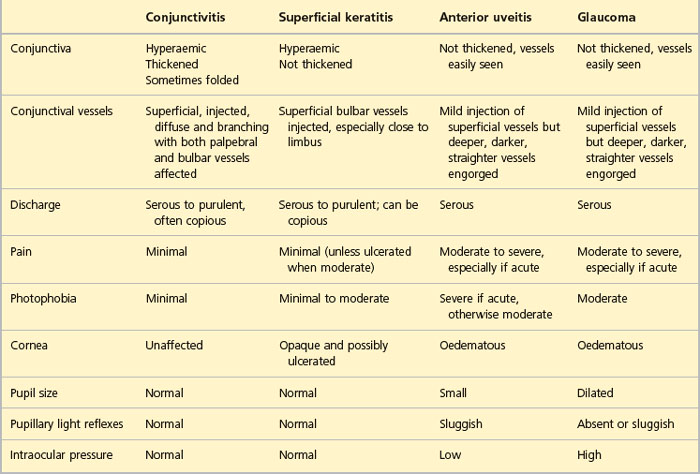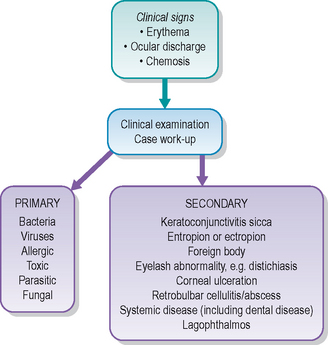10 Acute conjunctivitis in dogs
CLINICAL EXAMINATION
Clinical signs of conjunctivitis
It is very important to establish whether these signs are due to purely conjunctivitis or whether other ocular involvement is present. Intraocular disease will normally be accompanied by conjunctivitis. Thus attention to examining menace responses, pupillary light reflexes, evidence of deeper episcleral congestion and intraocular examination are necessary (Table 10.1). Intraocular pressure should be measured if there is any evidence of intraocular disease.
If the ophthalmic examination reveals no intraocular disease, the next step is to determine whether the conjunctivitis is primary or secondary. The latter is common, with corneal ulceration, entropion, eyelash abnormalities, foreign bodies and keratoconjunctivitis sicca being most frequently involved. Once these have been ruled out we can, by a process of elimination, surmise a primary conjunctival disease (Figure 10.1).





